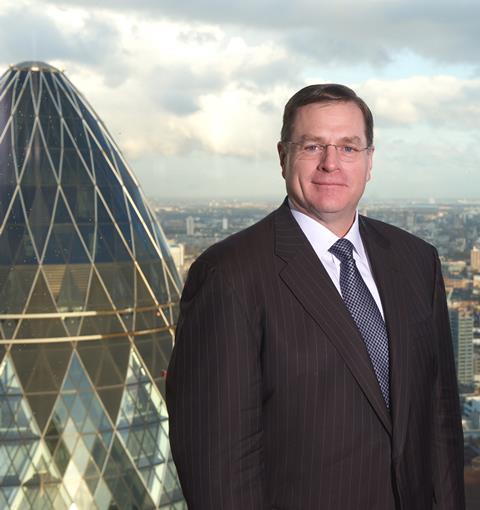President and chief executive Greg Case reflects on the findings of Aon’s 2015 Global Risk Management Survey and considers how the interconnectedness of risk requires strategic change among businesses

One thing is certain about today’s globalised economy: no company or country can afford to operate in isolation. It is also clear that not every company or country is ready for the complexity that comes with globalisation. The days of unencumbered growth from simple cross-border mergers and acquisitions have been replaced by the hard reality of managing global supply chains. The blue-sky rhetoric of promising trade agreements has also given way to the long-term challenges of regulating increasingly interdependent economies.
There is no question that globalisation offers tremendous potential in terms of international partnership, technological innovation and business expansion. However, it also has a multiplier effect, significantly increasing the magnitude, complexity and speed of risk. When I meet with our clients around the world, this dominates the conversation. They understand the promise of globalisation, but are mindful that the risks are greater than ever before.
There is no question the risks our clients face – traditional and non-traditional – are growing, but the pace of change is also greater, and the interconnected nature of risk is unparalleled. A natural disaster such as the earthquakes in Nepal can have a tangible impact on operations, but a cyber attack could be as instant – and ultimately, much further-reaching – with a sustained impact on intangible assets such as corporate reputation.
As the leading provider of risk and human resource solutions, Aon appreciates the challenges these issues create and the opportunities as long as they are properly addressed. This is why Aon continues to invest in industry-leading analytical capabilities. We believe our clients are managing through an era of unparalleled complexity, and we are committed to helping them to better understand the new dimensions of risk.
In keeping with that commitment, Aon recently released the results of its 2015 Global Risk Management Survey. Conducted in the fourth quarter of 2014, the survey gathered input from 1,418 respondents at public and private companies of all sizes around the world. Predictably, the results of this work reinforced our belief in the interconnectivity of risk. The survey also highlighted the importance of alignment between perceived risks in senior management [the C-suite] and actual priorities being addressed by risk managers.
The Interconnectivity of risk
In this year’s survey, Aon’s global clients selected damage to brand and reputation as a top concern across almost all regions and industries. This ranking can be attributed to the growing challenges businesses are facing from the risks found elsewhere on the top 10 list, including cyber risk, business interruption, property damage and the failure to innovate.
With 24-hour news cycles and the advent of social media, when an organisation faces a significant crisis event – whether a data breach, product recall or leadership change – public scrutiny is magnified and public trust threatened, thus instantly compromising the organisation’s hard-earned reputation.
Given the growing number of major data breaches in the past 24 months and their widespread reputational impact, it is of little surprise that cyber risk entered the survey’s top 10 for the first time ever this year, at number nine. Recent high-profile breaches at global companies such as Sony have demonstrated the real damage posed by the interconnectivity of risk. Every company faces these challenges, and it is a question of when – not if – they will be forced to address them.
Aon helps organisations of all sizes to manage cyber risk. We work side by side with our clients and market partners to address capacity needs, but we do not stop there. We are also helping clients to understand the root causes of security breaches and ready their organisation to protect its reputation in the event of an incident. Our cross-functional approach is designed to reinforce IT security, strengthen data and privacy policies, develop training programmes to improve monitoring and accelerate response plans in the event of an attack.
The evolving role of risk management
This year’s survey also reveals a surprising disparity in the respective concerns of C-suite leaders and risk managers. Aon’s clients’ senior management teams readily identified financial and economic risks – including commodity prices, economic slowdown and technology failure – as most damaging, while their risk managers identified liability-related risks such as cyber, property damage and third-party liability.
This lack of alignment illustrates a potentially alarming gap between strategic priorities and tactical realities. The increasing complexity of risk management requires its integration into an organisation’s strategic planning process, and demands more regular collaboration between senior leadership and the risk- management function.
For example, many of our clients use financial structures such as captive insurance vehicles and multinational pools to manage their global risks. That number grew to 18% of respondents this year, up from 15% in 2013 – and that trend is expected to continue. These sophisticated solutions have many benefits, but they also underscore the need for risk managers to work more closely with company leadership to ensure everyone understands which risks are being retained, and which are being transferred.
It is also important that senior management recognise the growing importance of people risks. This year, the failure to attract and retain top talent and the failure to innovate both landed in the global top 10. There is no question that organisations are under intense pressure to nurture the ingenuity and maximise the potential of their people.
The survey results reinforce the fact that companies that cannot appropriately align and incentivise their workforce will quickly lose ground to the competition. That perspective was most acute in North America and the Asia-Pacific region, where clients ranked failure to attract and retain top talent as the second most significant risk, behind only brand and reputation.
As leaders in human resource solutions, our team at Aon understands that connection, and uses insights from industry-leading research, such as its Top Companies for Leaders report, to help our clients understand that growth strategy begins with talent strategy.
The findings of the 2015 Global Risk Management Survey reinforce that Aon’s clients – across the finance, risk management and human resources functions – will have an increasingly important seat at the table as their companies wrestle with the massive opportunities and inherent complexities that come from further globalisation. As they are being asked to play increasingly collaborative and strategic roles within their organisations, leading brokers will be judged by their ability to supplement their traditional transactional role with more nuanced insights into the interconnected nature of the risks their clients face.
This is why Aon is so committed to investing in its data and analytics capabilities. The company believes its ability to help clients recognise and prepare for the growing speed, magnitude and complexity of risk is directly connected to their ability to achieve their business goals.
Learn more about the findings in Aon’s 2015 Global Risk Management Survey, and the interconnected nature of risk here.



















No comments yet